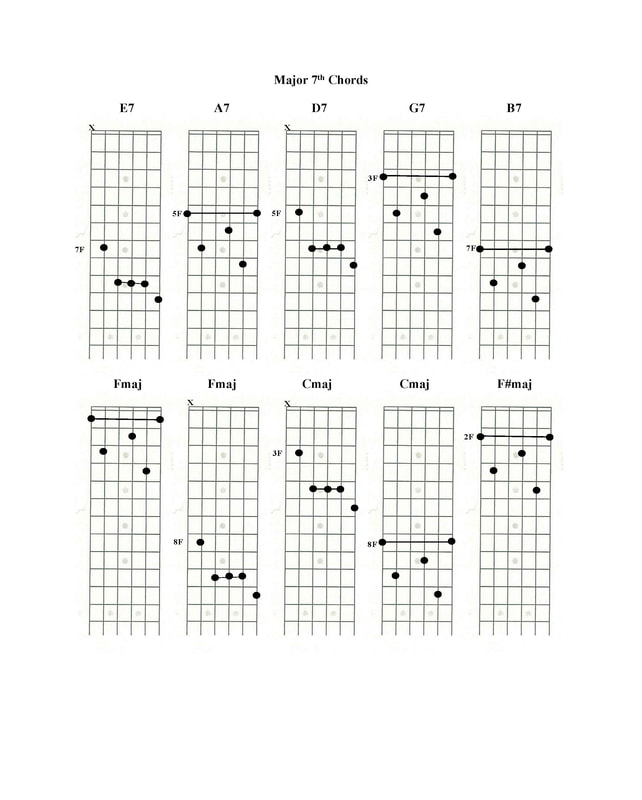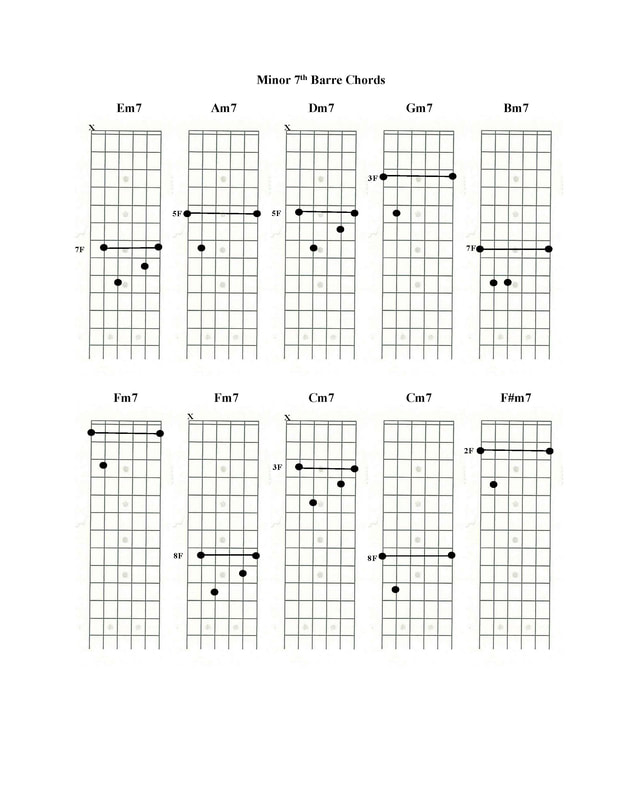7th chords
Theory
So far, we've looked at simple major and minor chords; however, there are many more complex chord structures. There are 9th, suspended, augmented, diminished, slash, and add chords, to name just a few. I've chosen 7th chords as the only additional chord type to explore because 7ths are common to the blues, and therefore they show up frequently in rock and country music.
So far, we've looked at simple major and minor chords; however, there are many more complex chord structures. There are 9th, suspended, augmented, diminished, slash, and add chords, to name just a few. I've chosen 7th chords as the only additional chord type to explore because 7ths are common to the blues, and therefore they show up frequently in rock and country music.
As the name implies, 7th chords are made by adding the 7th note from the root. For E, counting notes from the root to 7 would be E-F-G-A-B-D. (Because there are eight notes in an octave, the 7th can be quickly calculated as the note preceding the root note.) To make a 7th chord for both a major and minor chord, that 7th note is simply added to the chord.
The diagrams for 7th chords include both open and barre chords, as well as major [PDF] and minor [PDF] versions. While it's true that many ways exist to voice all chords (you just need to include a root, V, III from anywhere on the guitar), this variety becomes all the more apparent for 7th chords. As an example, here are 10 different ways to play an Emaj7 [PDF].
Exercises
Follow the same practice regimen forming chords you've done for major and minor chords. Then try to create a single alternate 7th voicing for A, D, G, F, and C differing from the versions I've given you.
Follow the same practice regimen forming chords you've done for major and minor chords. Then try to create a single alternate 7th voicing for A, D, G, F, and C differing from the versions I've given you.



